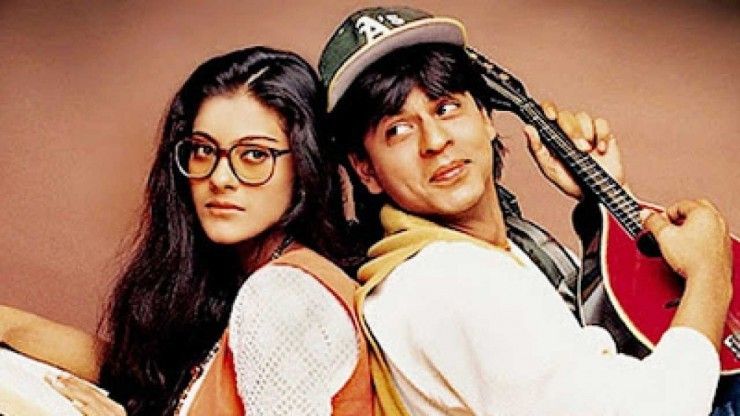Grow old with me as we learn this cinematic transition.
Film is a powerful medium for storytelling, and filmmakers have a variety of techniques to convey complex ideas and emotions. One technique that allows filmmakers to show a character’s growth and development over time in a short period of time is dissolving maturation.
Whether used in Hollywood Blockbusters or Bollywood musicals, the crossfade is a powerful storytelling tool that can add depth and complexity to a film’s narrative.
In this article, we’ll explore the history and use of ripening fade in film, examining how this technique has been used by filmmakers to convey important themes and create emotional connections with audiences.
Together, let’s mature.

What is a maturation crossfade in cinema?
The maturing crossfade is a fun and effective technique to watch because it allows the audience to feel invested in a character’s journey, to experience passage of time with them, and explore important themes and emotions
Maturation Dissolve Definition
A “maturation dissolve” is a cinematic technique used to show a character’s growth and maturation over time. It is made by showing a series of images that gradually dissolve into each other, conveying the passage of time.
For example, a maturing fade can be used to show a character aging from childhood to adulthood or to demonstrate the passage of time over a long period of time. It can also be used to transition between scenes or to convey a character’s emotional development.
It is most commonly used in Bollywood cinema to show a character aging from childhood to adulthood or to see the time passing between two different timelines of history.

What makes a maturing crossfade fun to watch?
The maturing fade is a technique that can be both visually and emotionally satisfying to audiences. Here are some reasons:
-
Compression time: The maturing fade is an effective way to compress time and show a character’s growth and development in a short amount of screen time. This allows the audience to experience the passage of time with the character and feel invested in their journey.
-
Creates a sense of continuity: By transitioning between shots using a crossfade, the maturing fade creates a sense of continuity between different points in a character’s life. This helps create a more cohesive narrative and emphasizes the cyclical nature of life.
-
Emotional resonance: Watching a character grow and develop over time can have emotional resonance for audiences. Dissolving Maturation allows viewers to witness a character’s journey and root for them as they overcome obstacles and achieve their goals.
-
Adds depth and complexity: By showing a character at different points in their life, the maturing fade can add depth and complexity to a film’s narrative. It allows filmmakers to explore themes of identity, responsibility, and personal growth, adding layers of meaning to the story.

Why do Bollywood films have a maturity that dissolves in them?
Bollywood films use maturing breakups as a narrative tool to show a character’s growth and maturation over time. Using this technique helps compress time and convey character development in an effective and visually appealing way.
Bollywood movies often have longer run times compared to American films, with many films having a running time of more than two and a half hours. In such films, it’s important to convey character growth and development without taking too much screen time. Crossfades allow filmmakers to show the passage of time and the maturation of characters in a visually interesting and effective way.
Additionally, maturing breakups are often used to convey a character’s emotional arc. They can be used to show a character’s struggles and growth over time, as well as their triumphs and accomplishments. This helps create a more immersive and emotionally resonant experience for the audience.
Examples of dissolving maturation in Bollywood cinema
Bollywood cinema was known for its maturation which dissolves in the early days. One of my favorites comes from the movie Zanjeer (1973).
The story is about a child who witnessed the murder of his parents at a young age. His name is Vijay (Amitabh Bachchan) and he grows up to be a respected police detective. We get the crossfade to the very beginning of the film, showing the backstory of the murder, then the credits, then tying this gruesome action to the child as an adult today, informing us of the driving force behind his character .
Another comes in one of my favorite movies of all time, Dilwale Dulhania Le Jayenge (1995). In the song “Ruk Ja O Dil Deewane”, we get a sort of mental maturation that dissolves when we see the character Raj (Shah Rukh Khan) grow from a boy to a young man, but only in perception.
Before that, he is perceived as a clumsy and immature person. After donning the suit and showing that he can perform in the adult world, we consider him a reasonable romantic interest.
There are many more in Indian cinema, but I’m not the best at finding them. If you watch Bollywood enough, you may even come to see this as a trope to expect. They became so influential that they branched out into American cinema as well.
The Dissolution of Maturation in American Film
The term “ripening dissolution” is not commonly used in the United States, but a similar technique is often used to show the passage of time and the ripening of characters. This technique is often referred to as “time lapse” Or “assembly.”
Although these serve similar purposes, they are not exactly the same thing, as a ripening dissolution usually occurs in a few quick moments.
In American films, a time-lapse or montage can show a character’s progression over a long period of time, such as their education or career or the growth of a relationship. This technique is performed by showing a series of images or scenes that are thematically or chronologically linked, often with music or voiceover to enhance the emotional impact.
The Dissolution of Maturation in American Film
The entire opening of the film At the top is an elongated maturation fade to allow us to understand the backstory of main character Carl (Ed Asner). In the “Married Life” sequence, there is a time-lapse that shows the life of the main character, Carl Fredricksen, from childhood to old age, symbolizing his growth and emotional development.
We see him winning and losing his wife, Ellie, and then becoming someone stuck all alone in the world.
Perhaps the most famous and strictly Bollywood-inspired maturing crossfade comes from The Lion King.
The “Hakuna Matata” song sequence uses a maturing fade to show the growth and maturing of Simba (Matthew Broderick). In this sequence, Simba, Timon, and Pumbaa sing and dance through the jungle as Simba grows from a young lion cub to a fully grown adult lion.
All in a few pictures.
The dissolution of maturation occurs around minute 2:25 of the song sequence, as Simba shifts from singing about his carefree life with Timon and Pumbaa to reflecting on his past and his responsibilities as future king. The crossfade shows Simba changing from a young lion cub to a young adult lion, symbolizing his maturation and growth.
The use of a maturing fade in this scene helps emphasize the passage of time and Simba’s growth and development over the years. It also helps set up the conflict that will arise later in the film, as Simba is forced to confront his past and his responsibilities as a future king.
Summarize the crossfade of maturation in cinema
Maturation fade is a cinematic technique used to convey the passage of time and character development in a compressed format. It involves the use of a crossfade or crossfade to transition between two shots, showing a character at different points in their life to symbolize their growth and maturation.
This technique is used in cinema all over the world, from Bollywood to Hollywood, and is found in a variety of genres and styles. It is often used to convey important themes and plot points, as well as to create an emotional connection between the audience and the protagonist.
Dissolving maturation can be a powerful storytelling tool, allowing filmmakers to compress time and convey character growth in an effective and impactful way. By showing a character at different points in their life, the crossfade emphasizes their journey and the challenges they overcame to reach their current state, adding depth and complexity to the story.
Overall, dissolving maturation has been a technique used by filmmakers for decades, and it continues to be a popular and effective way to convey character development and growth in film.
Let me know your favorite fade in the comments.
